

This website uses cookies to improve the user experience. We use cookies in accordance with our NRMA Group Cookie Policy.
This website uses cookies to improve the user experience. We use cookies in accordance with our NRMA Group Cookie Policy.
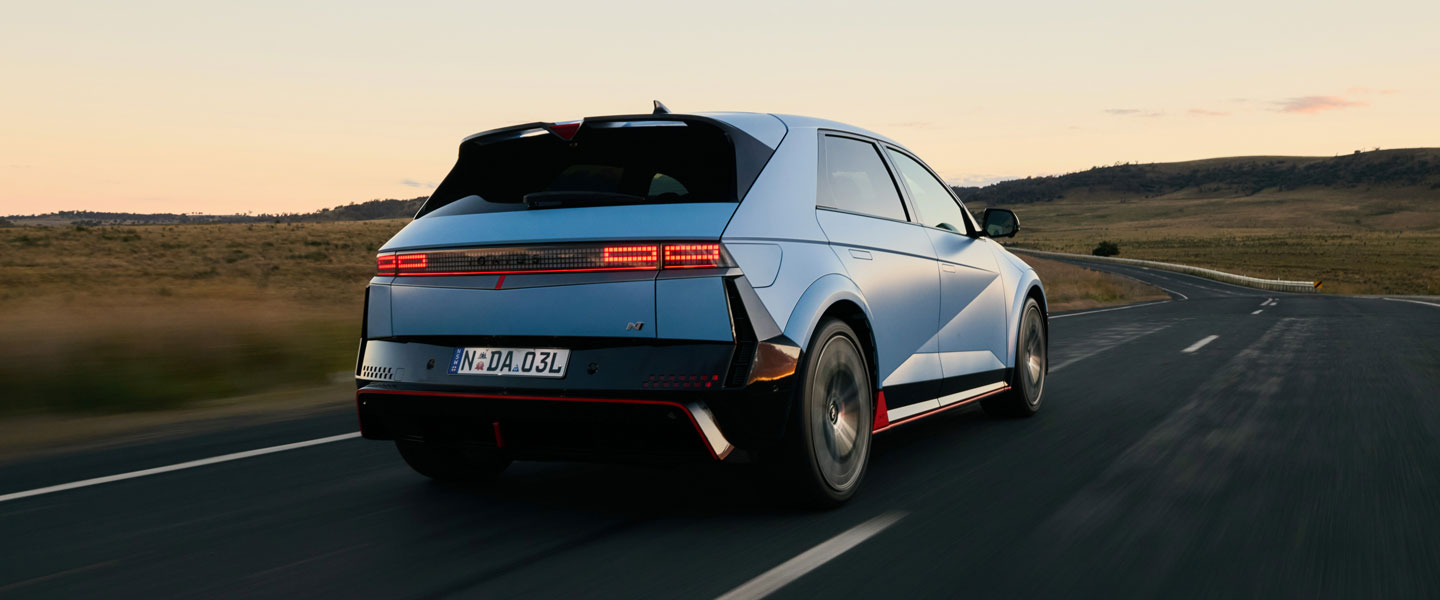
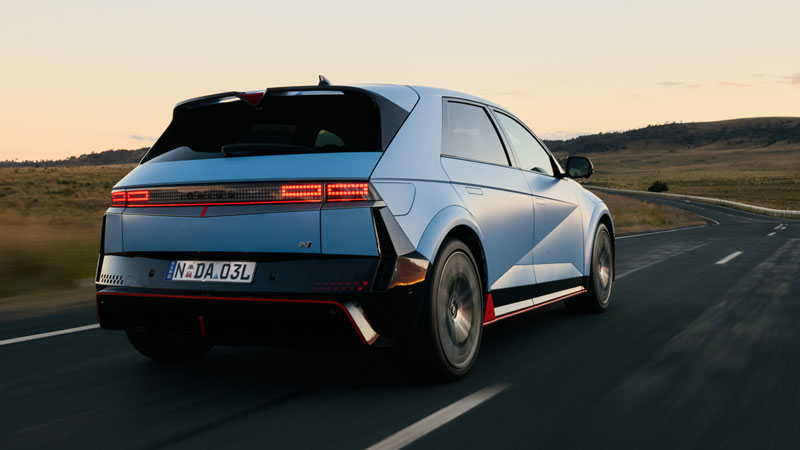
This rating is based on an NRMA road tester's evaluation of the vehicle against similar competitors and is provided as a guide only.
Picture a group of motoring journos climbing into a line-up of Hyundai’s latest high-performance vehicle parked outside a western Sydney hotel. They start revving the engines, delivering deep growls, rumbles and exhaust pops. A hotel clerk standing in the foyer has her mouth agape in a look of utter confusion. “But… isn’t it an electric vehicle?” she tentatively asks a colleague.
Yes, the Hyundai Ioniq 5 is indeed an EV (we’ll explain this apparent conundrum later) that was first released here in late 2021 and built from the ground up as a dedicated electric car. It’s Hyundai’s first EV to receive the performance enhancing N treatment and is priced at $111,000, making it the most expensive Hyundai car ever sold here.
With just one variant available, the Ioniq 5 N’s AWD powertrain consists of front and rear electric motors able to unleash 448kW and 740Nm. The revised battery (84kWh) has a pre-conditioning function and provides a claimed range of 448km, while supporting 10-80 per cent charging times of 70 minutes using common 50kW chargers, or as low as 18 minutes if you can find a scarce 350kW charger.
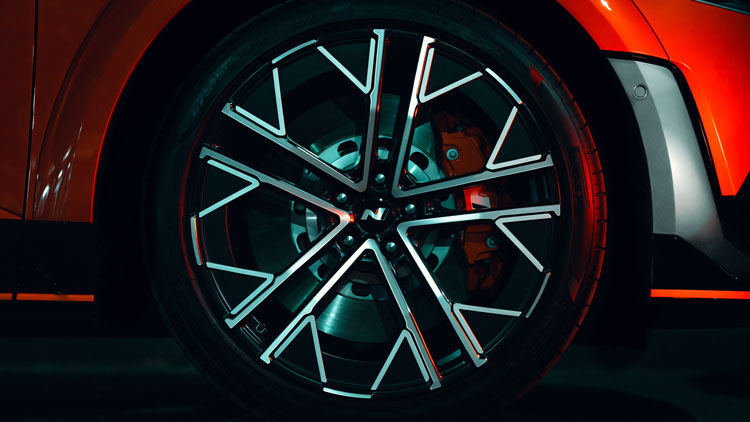
Externally, the Ioniq 5 N is more hot hatch than SUV, with added features advertising and aiding its monstrous abilities. A rear spoiler, diffuser, front air curtains and active front air-flaps manage airflow, with the latter opening when needed to promote cooling.
New 21-inch alloys are 1.2kg lighter than the original car’s 20-inchers and a signature N luminous orange strip runs around the vehicle’s base, including along new side skirts. A fixed glass roof ($2000) and matte paint ($1000) are the only two options available.
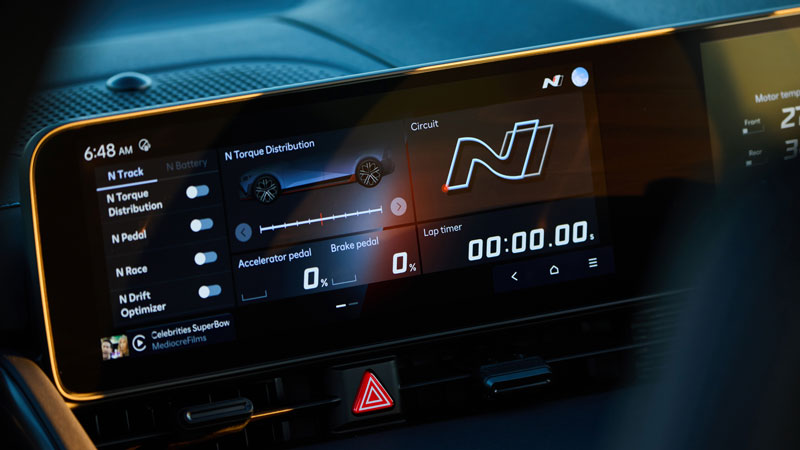
The ordinary Ioniq 5’s open and clean interior fashioned from recycled materials is replaced with a performance-orientated cockpit in black trim only, with a new centre console featuring a wireless charging pad and two USB-C ports.
Greeting drivers are larger pedals with metal and rubber chequered grips and a new N steering wheel with perforated leather grips. Heated and ventilated sports front seats are positioned 19mm lower for a more engaged driving experience and are wrapped in blue-stitched leather and Alcantara.
Comfort levels are excellent, but the seats are only manually adjustable and not as bolstered as you’d expect for a car with racetrack capabilities.
There are also the familiar Ioniq 5 highlights: a seamless 12.3-inch instrument cluster and 12.3-inch infotainment touchscreen, eight-speaker Bose audio, and vehicle-to-load connection that can power other electrical equipment. Rear passengers get plenty of room to stretch out, but when the armrest in the middle seat is folded up the underside is hard and uncomfortable to lean against for any period.
With a 0-100km/h sprint time of just 3.5 seconds, acceleration is never lacking and pressing the N Grin Boost button on the steering wheel gains an extra 30kW and 30Nm for 10 seconds on already ridiculous levels of power and torque.
For spirited driving confidence in what is a hefty 2.2-tonne vehicle, Hyundai has endowed the Ioniq 5 N with additional chassis strengthening, an electronic limited slip differential, electronically controlled suspension, and larger brakes.
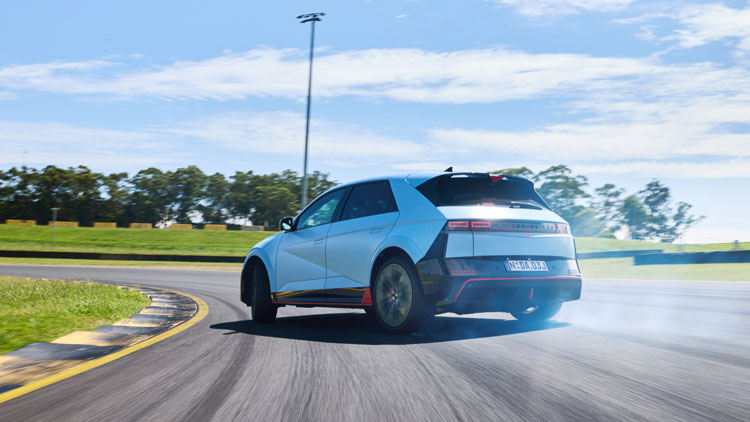
Here’s where we get to those selectable engine sounds mentioned earlier. Pumped through internal and external speakers, Ignition mode simulates an engine much like the 2.0-litre turbo in the Hyundai i30 N.
While there’s every temptation to dismiss this as a gimmick, Hyundai has combined it with N e-Shift to add the sensation of shifting gears, either in auto or using the paddles.
It feels surprisingly real, so a visceral joy comes naturally when downshifting to slow into a turn and in hearing a satisfying crackle and pop.
However, the other two options of Evolution (futuristic EV) and Supersonic (fighter jet) fail to suspend your disbelief and are just annoying. The same can be said for lane safety and speed limit alerts that still revert to ‘on’ with every engine restart, and are particularly unwelcome in a car focused on driver engagement.
For all its emphasis on driving fun (there’s even a drift optimiser setting for tyre-shredding track days), the Ioniq 5 N can still be a quiet and comfortable EV for daily commutes. Traditional car enthusiasts might remain sceptical but kudos to Hyundai for bringing something new to the EV landscape.
Pros: Focus on driver enjoyment; blistering pace; simulated engine experience
Cons: Manually adjusted seats feel wrong for $111k; average range; driver assistance alerts